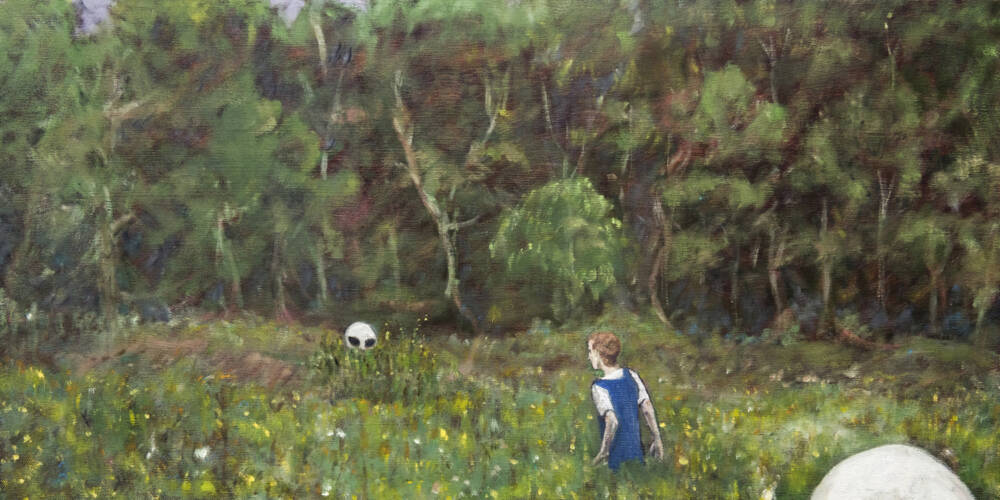UFOs and extraterrestrial life in pop culture
At least since the 1950s, stories about UFOs, aliens and journeys into space have served as the basis for films, series, books and visual art.
Star Wars, Signs, Star Trek, ET and The Alien movies, whose main character was designed by painter and sculptor H.R. Giger, are popular examples. But also works which are based on allegedly real-life events come to mind, such as Close Encounters of the Third Kind or The X-Files. David Bowie had his acting debut as an alien in The Man Who Fell to Earth, and even Wes Anderson’s latest movie, Asteroid City is about astronomical phenomena, asteroids, an UFO and an alien.


Mostly, the depictions of the aliens are threatening and their intentions evil. Now and then, there is a representation which underlines the otherness and inconceivability of alien life and portrays them without humanizing them — like in the movie Arrival from 2016. Here, not only the the aliens, but also the UFOs are depicted abstractly, not in a the flying saucer matter. In the genre of film, there have also been funny approaches to the subject, in Mars Attacks, Space Jam, Rick and Morty or the French movie Cabbage Soup, starring Louis de Funès.


However, this would not be a text about UFOs and extraterrestrial life in pop culture if limited only to film.
Throughout recent history, musicians, fashion designers and authors have been inspired by the fascinating topic and included it in their work.

Be it albumcovers, songlyrics or an overall approach to aesthetic and mindset, like in the case of GRIMES. The singer has reveiled a new piece by tattoo artist tweakt earlier this year and stated she wants her whole body to be covered in “alienscars”.

The fascination — and in some cases obsession — with aliens, UFOs and space travel grew by the secrecy governments have made about the topic. It was only in 2013 that the CIA confirmed the existence of area 51. Before that it was officially denied, fueling conspiracy theories. When the US military published footage of unidentified flying objects in 2020, the debate about the legitimacy of UFOs has switched and reached acceptance beyond convinced ufologists.

Along the official side to the topic, there are thousands of alleged ufo sightings and reports of alien abductions. After running for over 60 years, the UK’s Ministry of Defence’s UFO was closed in 2009. The British national archives opened the collected documents to the public in 2013. David Clarke published a selection of the drawings, showing a variety of paintings, descriptions, photographs and drawings from people of all ages and published them at Four Corners Books.

Covering human’s way to creatively deal with the subject would to be incomplete without the signals humans sent out into space: in 1973 Nasa sent out robotic space probes with a pair of gold-anodized aluminum plaques, containing pictorial messages. The plaques are trying to describe life on earth — however being criticized for being too anthropogenic and hard to understand. Another message to outer space is called Arecibo message and was transmitted via radio-waves in 1974. It has a more complex structure trying to describe our surroundings and our place in it.

With science telling us that we live in an ever expanding field of matter with uncountable galaxies around us, would it not be naive to believe we are really alone?
Rapper Nas answered the question for himself in his song “We Are Not Alone” from 2008 where he raps:
“Evidence remains in debate
Documents of our own air force base
Additional terrestrial information
Other planets with life population
My observation, scientists study pictures of a flyin’ disc
Right on earth, anthropologists are findin’ shit
Visitors, probably live with us, they can mimic us
It’s sort of what we seein’ in the cinemas
Take a look in the mirror
And see the bigger picture”
Image Credits:
Cover:
© Warner Bros. © Arecibo-Observatorium © Rick Owens
© Fox © Focus Features © Studio Canal © Touchstone © Gucci
© Grimes © Love & Saucers © NASA © Love & Saucers